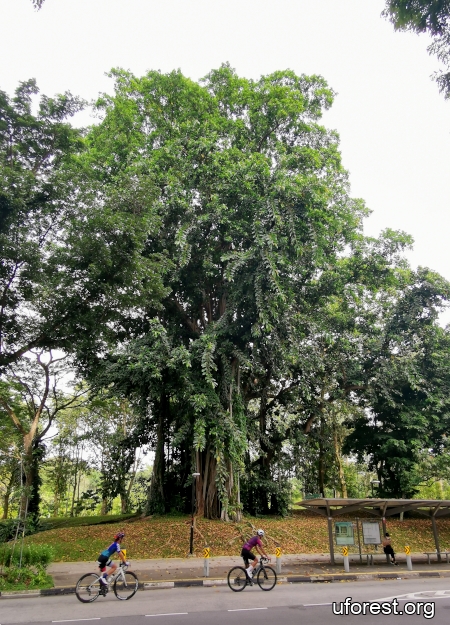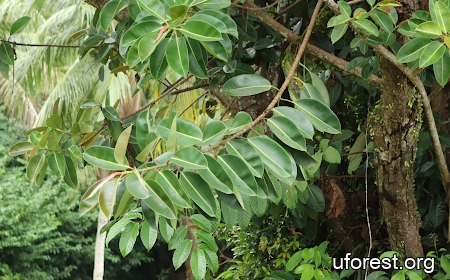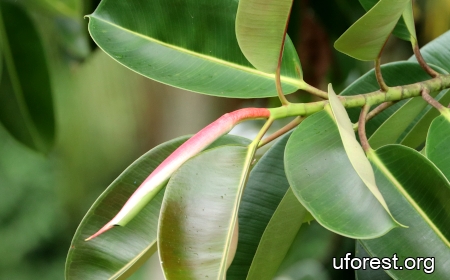| Etymology | Genus | From the Latin name for the fig (Ficus species) |
|---|---|---|
| Species | Elastic, referring to its past use of latex for rubber | |
| Family | Moraceae | |
| Synonyms | - | |
| Common Names | Indian Rubber Tree | |
| Status | Exotic: Casual | |
| Form | Tree | |
| Native Distribution | Nepal, India to China (W. Yunnan) and West Malesia | |
Diagnostics:
A large fig tree that can grow up to 30m. It grows aerial roots and has drooping branches. A distinct feature of this fig is the red stipules at the end of each branch. The leaves have parallel secondary veins.
Interesting Facts:
The Indian Rubber tree was widely cultivated in the late 18th and 19th centuries for its latex, which was used as rubber during Europe's Industrial Revolution, before the Para Rubber Tree replaced it. Around 2005, it was observed that seedlings of the fig occurred naturally in Singapore. It was found that the fig was pollinated by the fig wasp Platyscapa clavigera, the first record of natural pollination after the tree was first introduced in the city-state 70 years ago (Harrison et al., 2017).

A large individual with aerial roots and drooping branches.

A branch.

Red stipule.

Closeup of leaves.
References
Harrison, R. D., Chong, K. Y., Pham, N. M., Yee, A. T. K., Yeo, C. K., Tan, H. T. W., & Rasplus, J.-Y. (2017). Pollination of Ficus elastica: India rubber re-establishes sexual reproduction in Singapore. Scientific Reports, 7, 11616.
Author: Siyang
Posted: 2025-09-24